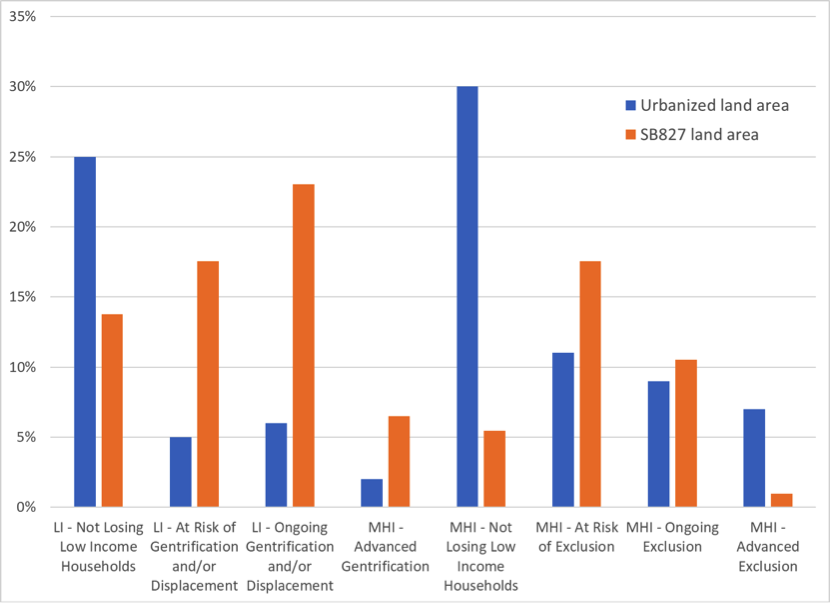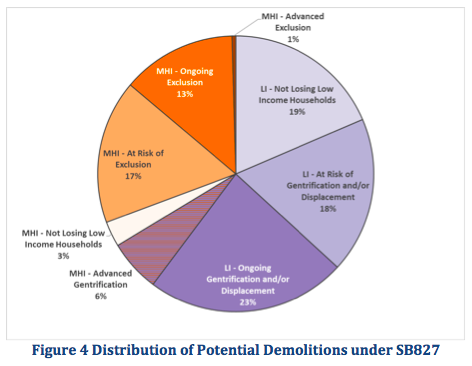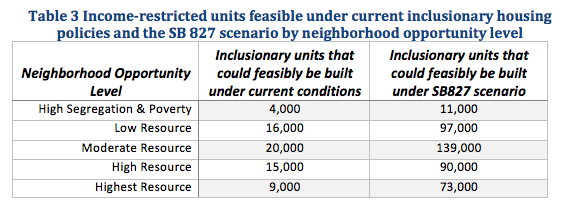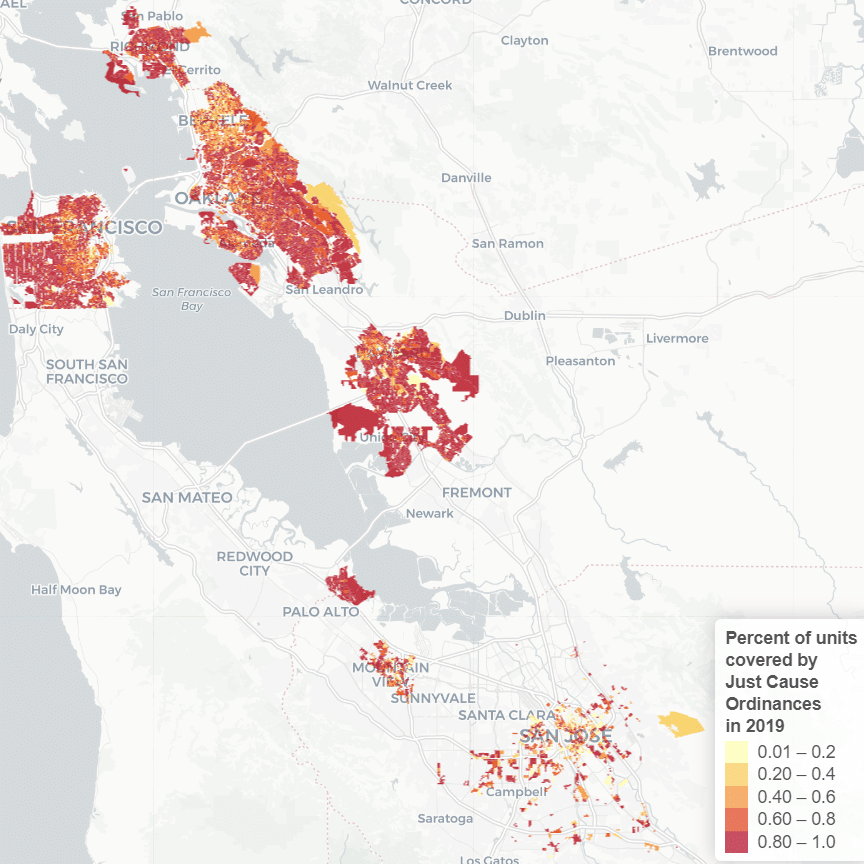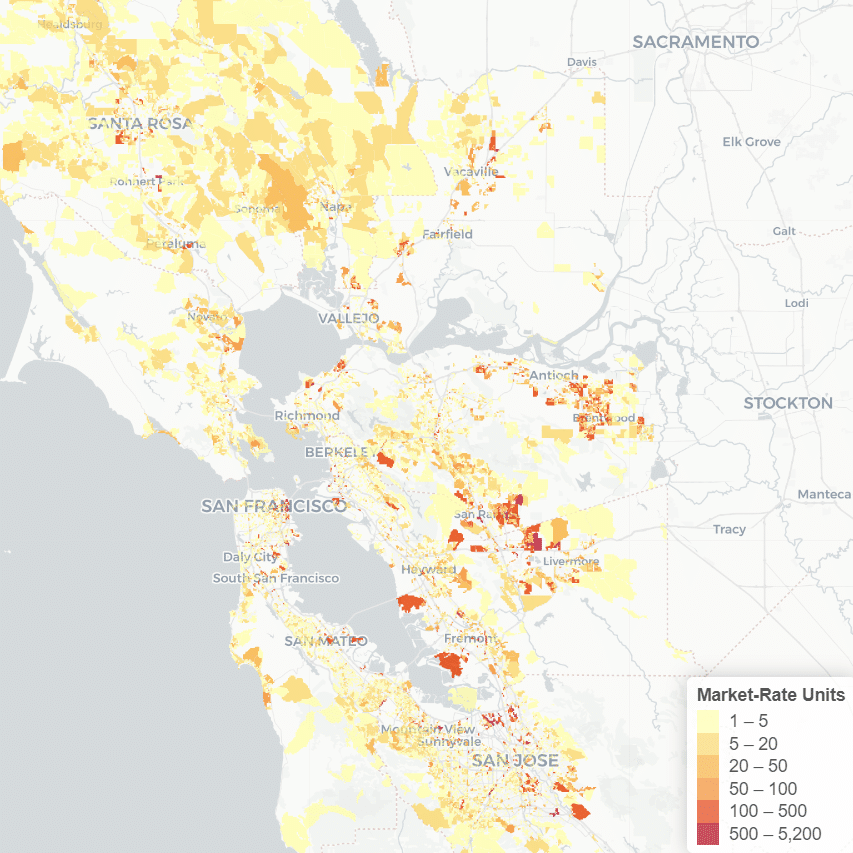Earlier this year, when Senator Scott Wiener introduced California Senate Bill 827 (SB 827), many people began to ask us at the Urban Displacement Project how the bill would impact low-income communities and communities of color.
Would it increase displacement pressures? Would low-income neighborhoods become more likely to gentrify or gentrify faster? What kinds of neighborhoods would the bill affect? Given the legacy of racialized zoning and land use in the U.S., and the severity of the housing crisis, it seemed that there was reason to be concerned about the implications of the bill for vulnerable communities, and members of such communities voiced these concerns.
During the bill’s lifecycle, we didn’t feel that there was sufficient analysis for us to take a position and therefore did not sign on to the various letters in support or opposition to the bill. Instead, we testified to the California legislature about the need to protect tenants alongside producing more housing.
Even though SB 827 didn’t leave committee, it is still critical to assess the potential impacts of similar legislation since an “SB 827 2.0” is likely on its way. Senator Wiener vowed to bring the bill back and is actively exploring the next iteration with a variety of stakeholders.
With this in mind, we partnered with our colleagues at MapCraft.io to understand the potential implications of SB 827. Using Mapcraft.io’s development feasibility calculators for the Bay Area, we focused on trying to understand what kinds of neighborhoods would have been affected by SB 827, how much new housing capacity would have been added in different types of neighborhoods, and where communities might have expected demolitions pressures on existing units. We looked at neighborhood type in two ways – our UDP typology for gentrification and displacement, and the Fair Housing Task Force typology for neighborhood resource level.
Our key findings are below. We organize them around “potential harms” and “potential benefits” as we find evidence of both.
Potential Harms
- Nearly half of the developable land in the Bay Area that would have been subject to SB 827 was in areas experiencing gentrification and displacement pressures or that were at risk of gentrification, while only 11% of the total acres covered under SB 827 were in areas considered more affluent or exclusive enclaves.
- Looking at financially-feasible development capacity (not just physical capacity allowed under zoning), the added capacity under SB 827 roughly mirrors the same geographic distribution of the capacity under current conditions: about 60% of the net new financially-feasible unit capacity would have been located in low-income and gentrifying areas.
- Our closest measure of potential direct displacement is based on places where construction of financially-feasible development capacity would require demolition of existing non-rent-controlled units. Over 65% of potential residential demolitions would have occurred in low-income or gentrifying neighborhoods.
Potential Benefits
- When compared to development potential under today’s policies, SB 827 would have produced a six-fold increase in financially-feasible market-rate housing capacity and a seven-foldincrease in financially-feasible inclusionary unit capacity – affordable units that would be required under the bill’s inclusionary housing stipulations.
- Looking at neighborhood resource levels, SB 827 would have increased financially-feasible development potential for market-rate units six-fold in the high and highest resourced areas of the region (from 130,000 units to about 820,000 units).
- SB 827 could have significantly increased capacity for inclusionary affordable units in the high and highest resourced areas (from 24,000 to 163,000 units). The greatest increase in capacity for inclusionary units would have been in moderate resource neighborhoods – from 20,000 to 139,000 units.
As with most policies, we find that there would be both potential benefits and consequences of a bill like SB 827. We are hopeful that further deliberations and data-driven analysis will help policy makers design a bil
l that can realistically achieve its stated environmental, fair housing, and equity goals.
Read about the detailed analyses and findings in the policy brief: SB 827 2.0: What are the implications for Bay Area communities?

